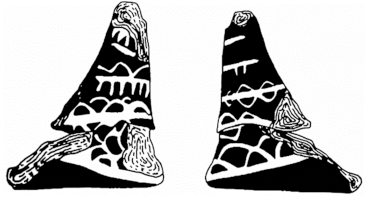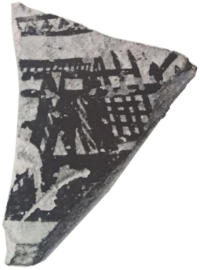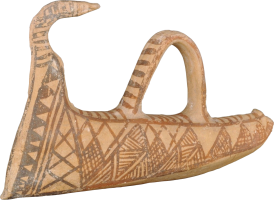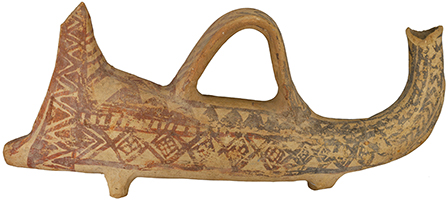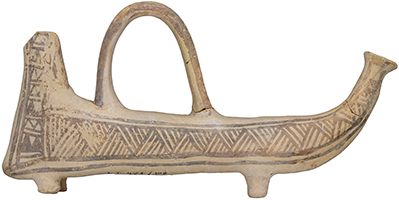A199a: Ship to the right, with a long flat hull and a vertical, non-integrated stempost with lattice work (group 2). The stem device is missing, as well as the lower part of the stern, the latter being highly incurving, and comprised of two parallel lines linked by crossbars forming a square aphlaston. A very long, well developed bow projection extends as a direct continuation of the keelline, with its upper side curving upward into the straight stem. There are two buffers (proembolia) of shorter length above it, their extremities capped with perpendicular strokes. The lower one extends from the horizontal line forming the gunwale. A forecastle that does not appear integrated to the bow is rendered by a rectangle with internal framing formed by two crossing oblique strokes. A series of 38 vertical strokes join the keel to the gunwale, their tips extending slightly above it. The mast is significantly forward of amidships, with a forked, V shaped masthead, a forestay and a backstay. There are short vertical strokes hanging from the latter as well as from the bottom side of the incurving stern, interpreted as decorative ribbons.
A119b: Ship to the right, in a much more fragmentary state of preservation. Only the forward section of the ship survives, from the bow to slightly past the mast. The presumable forecastle and stem device are missing. The ship resembles the first one except for the bow projection which seemingly appears as a more advanced form with a concave stempost. The two buffers (*proembolia*) are depicted in an identical manner.


